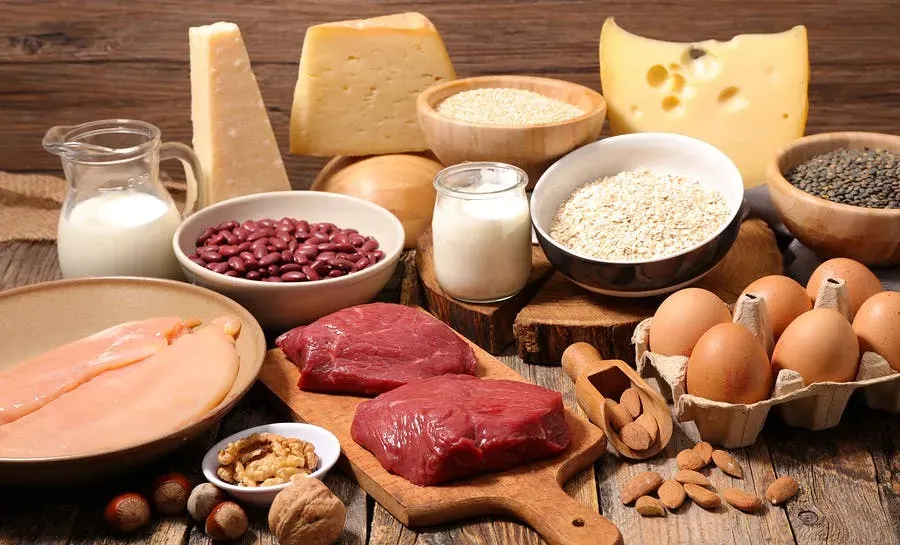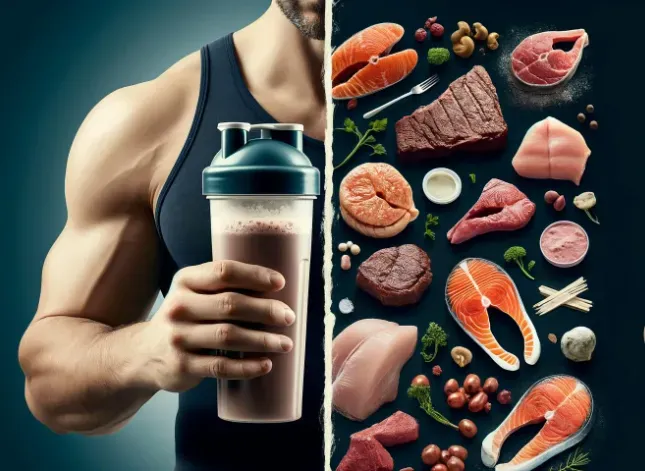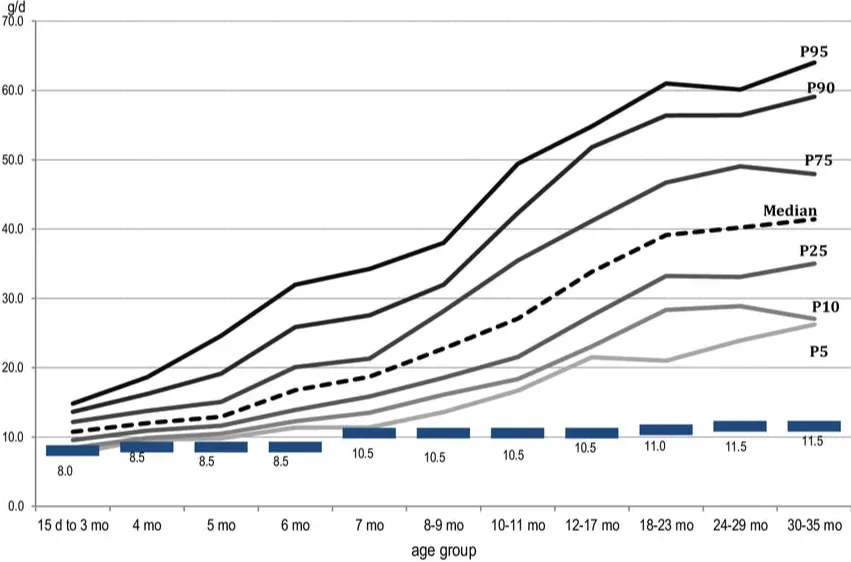How to Optimize Your Protein Intake for Maximum Muscle Growth

Understanding Protein Needs in Resistance Training
The Basis of Protein Absorption and Muscle Anabolism
The fundamental concept in nutrition and fitness revolves around maximizing muscle protein synthesis (MPS), a crucial process for those engaging in resistance training. Protein, comprised of amino acids, is essential for repairing and building muscle tissue. After ingestion, proteins are broken down into amino acids, which are then absorbed and utilized by the body. Studies suggest that MPS rates are significantly influenced not only by the amount but also by the type of protein consumed (Morton et al., 2015).
The research underscores that while the body's ability to absorb protein is vast, the optimal utilization of this protein for muscle building has practical limits per meal. This is due to the body's mechanisms for nitrogen balance and amino acid oxidation, which handle excess protein (Morton et al., 2015).
The Myth of Maximum Protein Absorption
A popular misconception in nutrition is the belief that there is a strict upper limit to the amount of protein the body can absorb in one sitting. Scientifically, absorption refers to the passage of nutrients from the gut into systemic circulation, and in this regard, the body can absorb a significant amount of protein. However, the efficiency of protein utilization—how well it is used for muscle-building purposes—differs. Excessive amounts beyond what is required for maximal MPS may be oxidized for energy rather than used for tissue-building (Moore et al., 2012). Thus, understanding the balance between intake and optimal use is crucial for dietary planning in resistance training.
Critical Analysis of Protein Dosing for Muscle Growth
Reviewing Key Studies on Protein Intake Post-Exercise
The study by Areta et al. (2013) pointed out that MPS is maximized with an intake of approximately 20-25 grams of high-quality protein post-resistance exercise. This aligns with the "muscle full" hypothesis, which suggests that beyond this threshold, additional protein does not contribute to greater muscle anabolism but is rather oxidized or used for other metabolic processes. Further research by Moore et al. (2012) supported these findings, showing no significant increase in MPS with protein doses above this range during the recovery period after exercise.
The Impact of Protein Type and Digestion Speed
The type and digestion rate of protein also play critical roles in muscle protein synthesis. Whey protein, known for its rapid digestion, can spike muscle protein synthesis quickly. In contrast, casein, a slower-digesting protein, provides a more prolonged release of amino acids into the bloodstream, which can be beneficial for muscle growth over extended periods, particularly overnight (Reitelseder et al., 2011; Dideriksen et al., 2011). The combination of different protein types may therefore offer advantages in sustaining elevated MPS levels across a day or night cycle.
Setting the Right Protein Targets
Establishing an Anabolic Threshold for Protein Intake
Determining the ideal per-meal protein intake to maximize anabolism has been a focus of numerous studies. The consensus from recent research suggests targeting around 0.4 grams of protein per kilogram of body weight per meal to optimize MPS (Morton et al., 2015). This guideline accommodates variances in individual metabolic rates and body compositions, catering to a more personalized nutrition strategy.
Daily Protein Distribution for Optimal Lean Tissue Accretion
For effective lean tissue building, the distribution of protein throughout the day is as important as the amount consumed in each meal. Spreading protein intake across multiple meals ensures a constant supply of amino acids, potentially enhancing overall muscle repair and growth. According to Morton et al. (2015), consuming a balanced amount of protein at least four times per day can maximize anabolic responses and support sustained muscle protein synthesis.
Advanced Protein Strategies for Resistance Trainees
Adapting Protein Intake to Resistance Training Routines
For individuals engaged in resistance training, adapting protein intake to their exercise schedule can enhance muscle recovery and growth. Post-exercise, a higher rate of protein synthesis is observed, making it a critical window for protein consumption. Integrating a mix of fast and slow-digesting proteins can leverage both the immediate and prolonged benefits for muscle repair (Tipton et al., 2004).
Special Considerations for Different Populations
Age, training status, and body composition significantly influence protein needs. Older adults may require higher protein intake per meal to elicit the same MPS response as younger individuals due to anabolic resistance, a natural occurrence with aging (Burd et al., 2012). Tailoring protein recommendations based on these factors is crucial for optimizing individual outcomes in muscle strength and mass.
Long-Term Implications and Future Directions
Longitudinal Studies on Protein Intake and Muscle Mass
While acute studies provide insights into immediate MPS responses, long-term studies assess the impact of sustained dietary patterns on muscle mass. Longitudinal research indicates that consistent, adequate protein intake combined with resistance training leads to significant gains in muscle mass over time (Wilborn et al., 2017).
New Insights and Potential Adjustments in Protein Dosage
Emerging research continues to refine our understanding of optimal protein dosages. The dynamic nature of muscle protein turnover suggests that ongoing adjustments in dietary protein strategies may be necessary as new findings arise (Mitchell et al., 2015). Researchers are now exploring whether there are benefits to exceeding current protein intake recommendations under specific conditions, such as intense training periods or recovery from injury.
Summarizing Best Practices in Protein Consumption
Essential Takeaways for Resistance Trainers
For resistance trainers aiming to maximize muscle synthesis, consuming high-quality protein within the recommended threshold of 0.4 g/kg/meal is advised. Equally important is the distribution of protein intake throughout the day to sustain anabolic states, supporting both immediate recovery and long-term muscle adaptation.
Future Research Needs and Closing Thoughts
As the science of nutrition and muscle metabolism evolves, so too will the strategies for optimal protein intake. Continuing research is essential for fine-tuning our approaches to meet the nuanced needs of diverse populations. By staying informed on the latest studies, individuals can better adapt their dietary practices to support their fitness and health goals effectively.
References:
- Morton RW, McGlory C, Phillips SM. Nutritional interventions to augment resistance training-induced skeletal muscle hypertrophy. Front Physiol. 2015;6:245.
- Moore DR, Areta J, Coffey VG, et al. Daytime pattern of post-exercise protein intake affects whole-body protein turnover in resistance-trained males. Nutr Metab (Lond). 2012;9(1):91.
- Areta JL, Burke LM, Ross ML, et al. Timing and distribution of protein ingestion during prolonged recovery from resistance exercise alters myofibrillar protein synthesis. J Physiol. 2013;591(Pt 9):2319–31.
- Reitelseder S, Agergaard J, Doessing S, et al. Whey and casein labeled with L-[1-13C]leucine and muscle protein synthesis: effect of resistance exercise and protein ingestion. Am J Physiol Endocrinol Metab. 2011;300(1):E231–42.
- Dideriksen KJ, Reitelseder S, Petersen SG, et al. Stimulation of muscle protein synthesis by whey and caseinate ingestion after resistance exercise in elderly individuals. Scand J Med Sci Sports. 2011;21(6):e372–83.
- Burd NA, Yang Y, Moore DR, et al. Greater stimulation of myofibrillar protein synthesis with ingestion of whey protein isolate v. Micellar casein at rest and after resistance exercise in elderly men. Br J Nutr. 2012;108(6):958–62.
- Tipton KD, Elliott TA, Cree MG, Wolf SE, Sanford AP, Wolfe RR. Ingestion of casein and whey proteins result in muscle anabolism after resistance exercise. Med Sci Sports Exerc. 2004;36(12):2073–81.
- Wilborn C, Taylor L, Poole C, Foster C, Willoughby D, Kreider R. Effects of a purported aromatase and 5α-reductase inhibitor on hormone profiles in college-age men. Int J Sport Nutr Exerc Metab. 2010;20(6):457–465.
- Mitchell CJ, McGregor RA, D'Souza RF, et al. Consumption of milk protein or whey protein results in a similar increase in muscle protein synthesis in middle aged men. Nutrients. 2015;7(10):8685–99.





